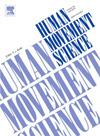重度听障青少年复杂全身序列的模仿
IF 1.9
3区 心理学
Q4 NEUROSCIENCES
引用次数: 0
摘要
许多研究已经确定了聋人在视觉上的特殊优势。然而,很少有研究将这些优势与运动学习联系起来。本研究旨在通过捕捉模仿复杂全身序列的动作,比较深度听力受损(HI)和正常听力(NH)青少年在运动和学习过程中的差异。为了同时分析时间序列中的多个参数并评估它们与参考的相似性,我们使用了带有自动编码器的深度学习策略进行异常检测。在本研究中,异常检测表明参考文献和参与者之间的差异。我们将阈值设为3σ。针对手部的分析表明,在第一次模仿中,HI的异常率明显低于NH;甚至在检查轨迹时,我们发现所有HI都遵循与参考舞者相同的模式。与NH相比,HI在第一次试验中能够捕捉和再现参照对象的运动特征,尤其是手部的运动特征,这拓宽了HI青少年运动指导的视角。本文章由计算机程序翻译,如有差异,请以英文原文为准。
Imitation of complex whole-body sequence in profoundly hearing-impaired adolescents
Many studies have identified specific visual advantages in deaf individuals. However, few studies have linked these advantages to motor learning. This study aimed to compare the differences in movement and learning processes between profoundly hearing-impaired (HI) and normal-hearing (NH) adolescents by capturing motions that imitate complex whole-body sequences. To analyze multiple parameters simultaneously in a time series and evaluate their similarity to the reference, we used a deep-learning strategy with an autoencoder for anomaly detection. In this study, anomaly detection indicated the difference between the reference and the participants. We set the threshold to 3σ. An analysis targeting the hands showed that HI had a significantly lower anomaly rate than NH in the first imitation; even when checking the trajectory, we found that all HI followed the same pattern as the reference dancer. Compared with NH, HI could capture and reproduce the motion characteristics of the reference in the first trial, especially in the hands, which broadens the perspective of motor instruction for HI adolescents.
求助全文
通过发布文献求助,成功后即可免费获取论文全文。
去求助
来源期刊

Human Movement Science
医学-神经科学
CiteScore
3.80
自引率
4.80%
发文量
89
审稿时长
42 days
期刊介绍:
Human Movement Science provides a medium for publishing disciplinary and multidisciplinary studies on human movement. It brings together psychological, biomechanical and neurophysiological research on the control, organization and learning of human movement, including the perceptual support of movement. The overarching goal of the journal is to publish articles that help advance theoretical understanding of the control and organization of human movement, as well as changes therein as a function of development, learning and rehabilitation. The nature of the research reported may vary from fundamental theoretical or empirical studies to more applied studies in the fields of, for example, sport, dance and rehabilitation with the proviso that all studies have a distinct theoretical bearing. Also, reviews and meta-studies advancing the understanding of human movement are welcome.
These aims and scope imply that purely descriptive studies are not acceptable, while methodological articles are only acceptable if the methodology in question opens up new vistas in understanding the control and organization of human movement. The same holds for articles on exercise physiology, which in general are not supported, unless they speak to the control and organization of human movement. In general, it is required that the theoretical message of articles published in Human Movement Science is, to a certain extent, innovative and not dismissible as just "more of the same."
 求助内容:
求助内容: 应助结果提醒方式:
应助结果提醒方式:


